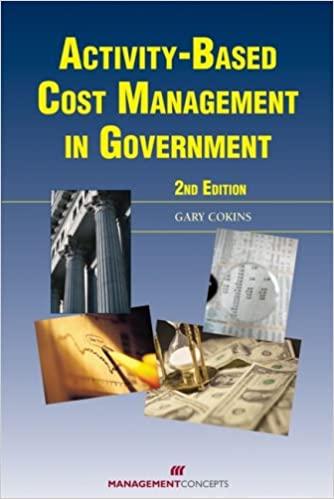Question
A simplified balance sheet of the Bank of Canada (BoC) looks as follows: This question relates to the mechanism behind money creation, which involves the
 A simplified balance sheet of the Bank of Canada (BoC) looks as follows: This question relates to the mechanism behind money creation, which involves the BoC, the Banking sector and the public. Start your discussion just after the BoC buys $90M worth of Government of Canada bonds in an open market purchase from a bank called Ecobank305. Assume in this question that: All banks have a desired reserve ratio of 10%. Banks will not hold any reserves beyond their desired reserves because there are sufficiently many lending opportunities The public will not change their currency holdings In this question we describe two alternative scenarios through which Ecobank305 and other banks bring back their reserves to the level they desire to hold, namely Scenario I: banks lend out the funds to the public; and Scenario II: banks buy securities from the public. (a) For Scenario I above, describe how Ecobank305s balance sheet will change following the $90M open market purchase by the BoC. (b) For Scenario II above, describe how Ecobank305s balance sheet will change following the $90M open market purchase by the BoC. (c) For Scenario II above, describe using T-accounts how the balance sheets of (i) BoC, (ii) the banking sector, and (iii) the public have changed after the new equilibrium has been reached. [if you cannot answer this question, then earn part-marks by answering this question for Scenario I] (d) In this question we assumed that The public will not change their currency holdings. Explain how this assumption is important for money creation. Specifically, if the currency holdings of the public were equal to 40% of their deposits, then how would that affect money creation after the moment the BoC buys $90m worth of bonds from Ecobank305?
A simplified balance sheet of the Bank of Canada (BoC) looks as follows: This question relates to the mechanism behind money creation, which involves the BoC, the Banking sector and the public. Start your discussion just after the BoC buys $90M worth of Government of Canada bonds in an open market purchase from a bank called Ecobank305. Assume in this question that: All banks have a desired reserve ratio of 10%. Banks will not hold any reserves beyond their desired reserves because there are sufficiently many lending opportunities The public will not change their currency holdings In this question we describe two alternative scenarios through which Ecobank305 and other banks bring back their reserves to the level they desire to hold, namely Scenario I: banks lend out the funds to the public; and Scenario II: banks buy securities from the public. (a) For Scenario I above, describe how Ecobank305s balance sheet will change following the $90M open market purchase by the BoC. (b) For Scenario II above, describe how Ecobank305s balance sheet will change following the $90M open market purchase by the BoC. (c) For Scenario II above, describe using T-accounts how the balance sheets of (i) BoC, (ii) the banking sector, and (iii) the public have changed after the new equilibrium has been reached. [if you cannot answer this question, then earn part-marks by answering this question for Scenario I] (d) In this question we assumed that The public will not change their currency holdings. Explain how this assumption is important for money creation. Specifically, if the currency holdings of the public were equal to 40% of their deposits, then how would that affect money creation after the moment the BoC buys $90m worth of bonds from Ecobank305?
Step by Step Solution
There are 3 Steps involved in it
Step: 1

Get Instant Access to Expert-Tailored Solutions
See step-by-step solutions with expert insights and AI powered tools for academic success
Step: 2

Step: 3

Ace Your Homework with AI
Get the answers you need in no time with our AI-driven, step-by-step assistance
Get Started


